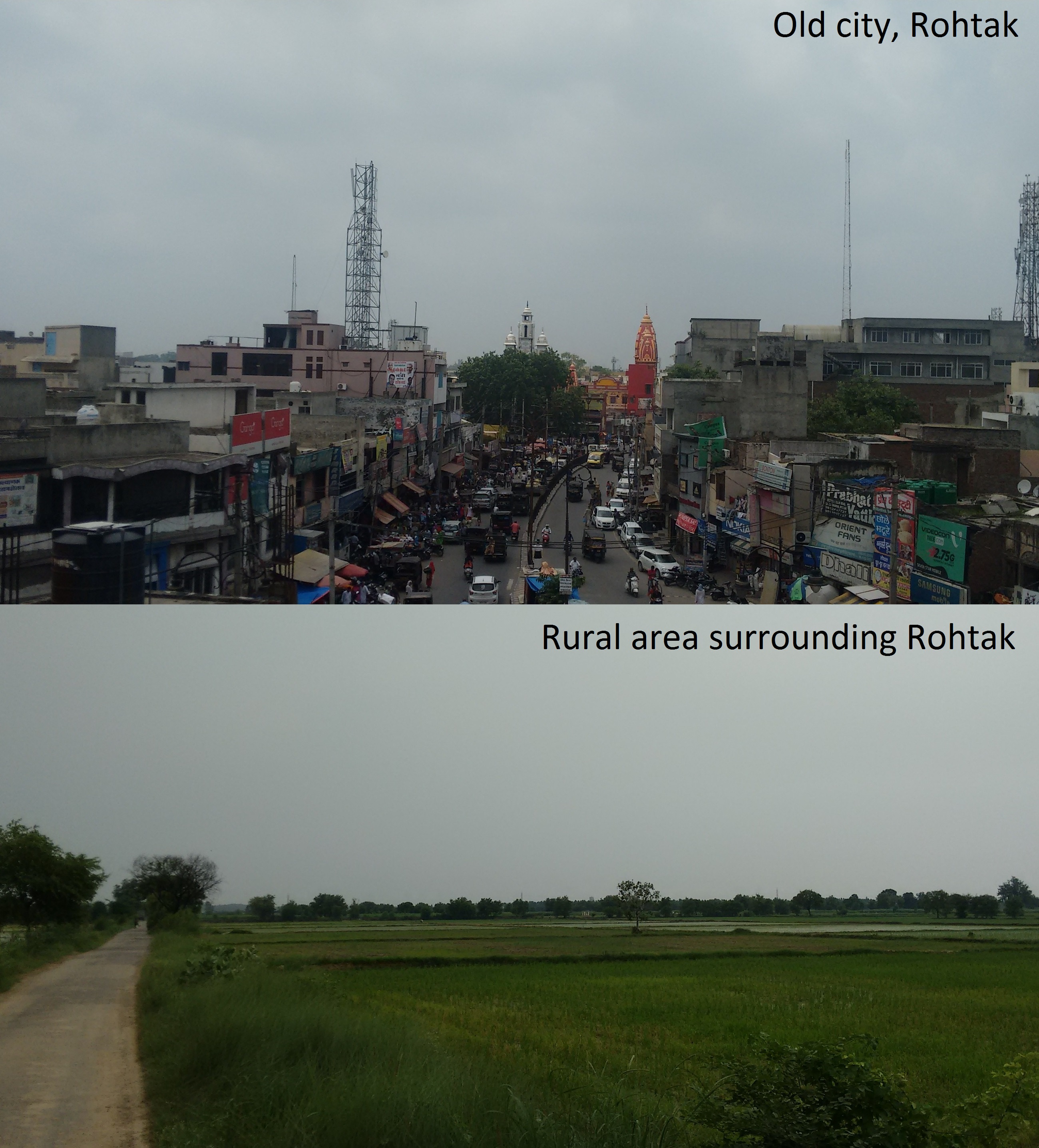
Uploaded on 2016-08-02 by Yugdeep
Historical trends in annual and seasonal temperature data from Rohtak meteorological station points to a consistent increase in the annual mean minimum temperatures, especially after 1990. Apart from natural fluctuations in climate and global warming some of this upward trend likely comes from increasing energy getting stored by the denser urban surface, decreased evapotranspiration due to change in land-use pattern and anthropogenic heat generation. These forces have strengthened due increased pace of urbanization in Rohtak (population of city increased from 216,000 in 1991 to 374,000 in 2011). Picture contrasts urban landscape of Rohtak with its rural hinterlands. Central neighborhoods of Rohtak are devoid of green cover, intensively use air-conditioning units and have very high vehicular density. All of these add heat to the environment. Increasing heat will make more people go for air-conditioned vehicles and homes, thus creating a feedback loop. I would propose presence of trees with broad leaves along the roads in the city to limit the heat effect in the city. Shade from trees will also increase walkability of the city and curb traffic. Some of old city streets should be made vehicle-free by installing bicycle stands and a limited number of e-rickshaws for elderly. Also the air conditioning needs to made efficient by replacing individual units with a centralized system for every cluster of buildings. As of now, increasing green cover of city interiors is the only option being looked into. This is not very helpful since vegetation being planted along median strips is mostly decorative in nature. [M. Mohan, A. Kandya, A. Battiprolu, "Urban Heat Island Effect over National Capital Region of India: A Study using the Temperature Trends", Journal of Environmental Protection, 2011]